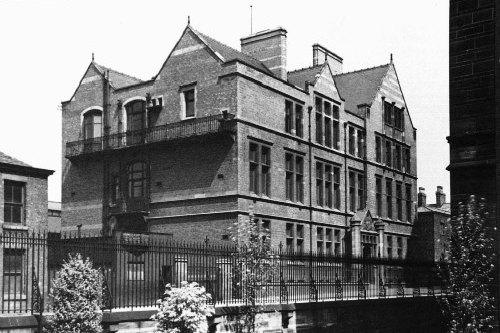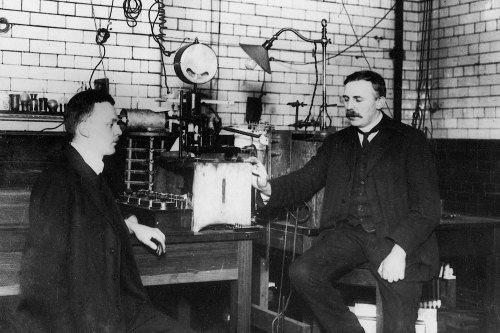The Rutherford Building
The Rutherford Building – originally called the Physics Laboratory – was opened in 1900. Its creator was Arthur Schuster, son of an Anglo-German mercantile family, graduate of Owens College, and a professor here from 1881. He based his designs on the best German models and on new American labs at Cornell University. In 1907 Schuster retired, and so the University sought the best possible successor.

Manchester was able to appoint Ernest Rutherford, a New Zealander who had studied in Cambridge under Joseph John Thomson. As a young professor in Montreal, Rutherford had already attracted worldwide attention for his studies of radioactive decay.
A brilliant experimentalist and a natural leader, Rutherford transformed the Manchester department, building a team of brilliant associates who created nuclear physics. Highlights included the discovery of the atomic nucleus in 1911, Henry Moseley's physical explanation of the different properties of chemical elements and the consequent Rutherford-Bohr model of the atom in 1915, and the 'splitting of the atom' in 1919. Other members of the Manchester team included Hans Geiger (co-inventor of the Geiger counter), Georg Halevy (radioactive tracers), Ernest Marsden (atomic nucleus) and James Chadwick (a Manchester student who later discovered the neutron).

When Rutherford returned to Cambridge in 1919, Manchester appointed William Lawrence Bragg, who had shared a Nobel Prize with his father for inventing x-ray crystallography. He was succeeded by Patrick Blackett, a Nobel Prize winner for his work on cosmic rays and a pioneer of geomagnetism. Work on cosmic rays led to radio astronomy and the University's world famous 'big dish', created by Bernard Lovell at Jodrell Bank in the 1950s.
In the 1960s the physics department moved to a new building, named after Schuster, on Brunswick Street. The old physics building was given over to psychology and now houses part of the University administration. Electrical engineering was initially linked with physics but became a separate department, from which developed Britain's first department of computer science, based on a series of pioneering computers, beginning with the 'Baby'. This machine, built in 1948 by Freddie Williams and Tom Kilburn, was the world's first digital computer.
